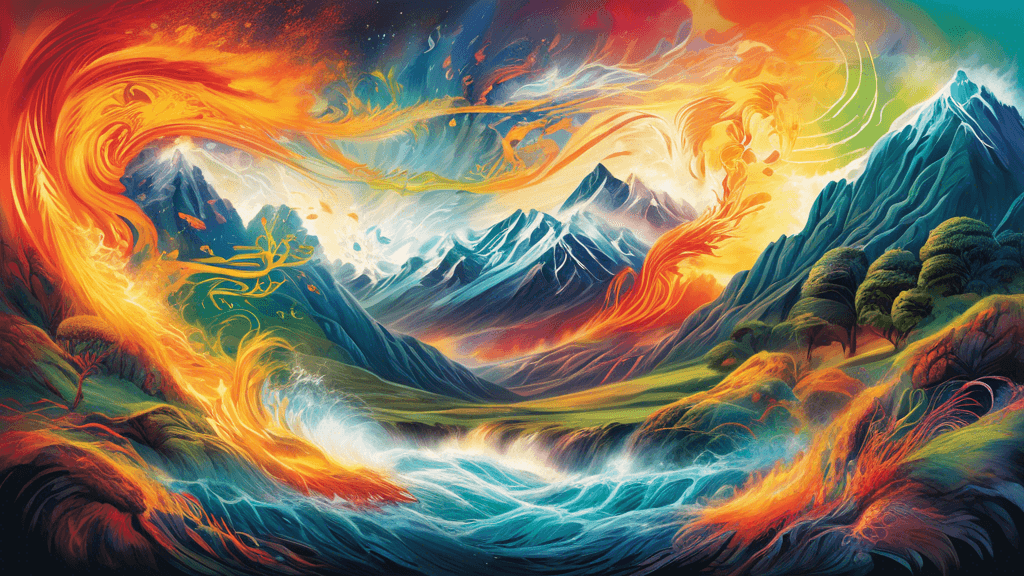
Harnessing the Elemental Forces of New Zealand: Earth, Wind, Fire, and Water
Share
The Elemental Forces of New Zealand: A Convergence of Earth, Wind, Fire, and Water
New Zealand, a country renowned for its awe-inspiring natural beauty, is a vivid tableau painted with the vibrant colors of earth, wind, fire, and water. These elemental forces are not just components of the landscape; they are the beating heart of this nation, shaping its culture, fueling its economy, and inspiring everyone from artists to environmentalists. This blog explores how these elements manifest throughout New Zealand, influencing and enhancing the life of its inhabitants and visitors alike.
1. The Steadfast Earth: New Zealand’s Landscapes and Geology
New Zealand’s geographical diversity is staggering. From the soaring peaks of the Southern Alps to the rolling hills of the Central Plateau, the earth beneath this nation is dynamic and ever-changing. The North Island is known for its volcanic activity, with places like Rotorua and Taupo showcasing bubbling mud pools and impressive geysers, a testament to the earth’s enduring power.
- The Southern Alps, stretching almost the length of the South Island, directly influence the climate and agriculture of the region.
- The Central Plateau of the North Island, formed by volcanic activity, is both a tourist destination and a vital source of geothermal energy.
Geologists and environmental scientists are particularly fascinated by New Zealand’s unique position straddling the Pacific and Australian tectonic plates, making it a hotspot for seismic and volcanic activity.
2. The Whirling Wind: Harnessing Air for Energy and Art
The strong and relentless winds that sweep across New Zealand have made it a world leader in wind energy. Places like the Manawatu-Wanganui region harness this elemental force through extensive wind farms, generating significant amounts of renewable energy. According to the New Zealand Wind Energy Association, about 5% of the country's electricity demand is met by wind power.
Artists also draw inspiration from the powerful New Zealand winds. Sculptures and installations that move with the wind are common in public spaces, celebrating this relentless natural force.
3. The Fiery Depths: Volcanic Activity and its Influence on New Zealand
Fire, in the form of volcanic activity, is most prominently displayed in the North Island’s volcanic plateau. The dramatic landscapes created by volcanic eruptions have formed the backbone of local mythologies and storytelling. For instance, the eruption of Mount Tarawera in 1886 is a pivotal event in both Maori folklore and the geological study of the region.
- Volcanic soils are incredibly fertile, supporting extensive agriculture and viticulture, especially in regions like Hawke's Bay and Gisborne.
- The thermal energy provided by geothermal fields is harnessed to produce electricity and provide heating, reducing the country’s reliance on fossil fuels.
- Water sports such as surfing, sailing, and fishing are popular pastimes that also contribute significantly to the local economies.
- The preservation of waterways is critical in New Zealand, with numerous initiatives aimed at protecting these vital ecosystems from pollution and overuse.
Environmental scientists and geologists continuously study these volcanic areas, not only to predict future eruptions but also to better understand the ecological impact of geothermal energy exploitation.
4. The Serene Water: Waterways and Oceans that Shape New Zealand’s Identity
The waters around and within New Zealand are integral to its identity. The country's extensive coastlines, rivers, and lakes play a crucial role in both cultural practices and recreational activities. Kiwis are known for their deep connection to the sea, with many traditional stories and contemporary practices revolving around water.
Environmentalists and policy makers work closely to maintain the balance between using and conserving water resources, ensuring that these practices are sustainable and that aquatic habitats are preserved for future generations.
As we've seen, the elements of earth, wind, fire, and water are not just parts of the natural world in New Zealand; they are forces that have profound impacts on its culture, economy, and environment. By understanding and respecting these forces, New Zealanders live in harmony with nature, leveraging its gifts while protecting its fragility.
In our increasingly environmentally-conscious world, perhaps there's a leaf to take out of New Zealand's book. How can we better understand and integrate the elemental forces in our own regions to promote sustainability and respect for nature? What strategies can be adopted from New Zealand’s example in your community or country?
If you're inspired by the possibility of a more sustainable coexistence with our planet's elemental forces, consider exploring more about renewable energy initiatives or participating in local environmental conservation programs. Every small step can lead to a leap in our collective environmental impact.





